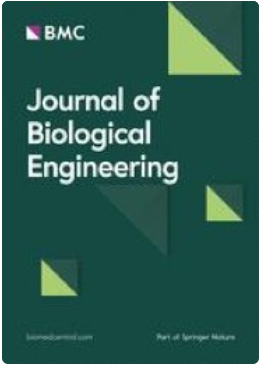利用生物传感技术确定土壤微生物群特征及其未来发展方向
IF 6.5
3区 生物学
Q1 BIOCHEMICAL RESEARCH METHODS
引用次数: 0
摘要
土壤微生物组的特征描述通常是通过新一代测序(NGS)技术实现的。元条码技术非常普遍,元组学技术也越来越受欢迎。这些技术在微生物学领域发挥了重要作用,但也有局限性。它们需要大量的时间、资金、专业知识和计算能力才能有效发挥作用。此外,这些技术仅限于受控的实验室条件,不适用于野外环境,也不能快速生成数据。这就阻碍了将 NGS 用作环境监测工具或现场检查设备。生物传感技术可应用于土壤微生物组表征,以克服这些局限性,并对 NGS 技术进行补充。生物传感技术在生物医学领域的应用已有几十年的历史,市场上已有许多成功的商业产品。鉴于其以往的成功经验,生物传感在土壤微生物组表征方面大有可为。生物传感器和生物传感技术种类繁多,其中有几种尤其适合土壤实地研究。与酶或抗体相比,Aptamers 更为稳定,更适于现场使用的生物传感器。鉴于任何微生物群都很复杂,因此需要一种多重传感器,而对于大型复杂的数据集,机器学习可能对这些分析有帮助。如果生物传感器发出的信号是光学信号,智能手机就可以用作便携式光学阅读器和潜在的数据分析设备。生物传感是一个结合了工程学和生物学的丰富领域,应用它的工具集来帮助推进土壤微生物组的特征描述,将为更广泛的微生物学带来福音。本文章由计算机程序翻译,如有差异,请以英文原文为准。
Soil microbiome characterization and its future directions with biosensing
Soil microbiome characterization is typically achieved with next-generation sequencing (NGS) techniques. Metabarcoding is very common, and meta-omics is growing in popularity. These techniques have been instrumental in microbiology, but they have limitations. They require extensive time, funding, expertise, and computing power to be effective. Moreover, these techniques are restricted to controlled laboratory conditions; they are not applicable in field settings, nor can they rapidly generate data. This hinders using NGS as an environmental monitoring tool or an in-situ checking device. Biosensing technology can be applied to soil microbiome characterization to overcome these limitations and to complement NGS techniques. Biosensing has been used in biomedical applications for decades, and many successful commercial products are on the market. Given its previous success, biosensing has much to offer soil microbiome characterization. There is a great variety of biosensors and biosensing techniques, and a few in particular are better suited for soil field studies. Aptamers are more stable than enzymes or antibodies and are more ready for field-use biosensors. Given that any microbiome is complex, a multiplex sensor will be needed, and with large, complicated datasets, machine learning might benefit these analyses. If the signals from the biosensors are optical, a smartphone can be used as a portable optical reader and potential data-analyzing device. Biosensing is a rich field that couples engineering and biology, and applying its toolset to help advance soil microbiome characterization would be a boon to microbiology more broadly.
求助全文
通过发布文献求助,成功后即可免费获取论文全文。
去求助
来源期刊

Journal of Biological Engineering
BIOCHEMICAL RESEARCH METHODS-BIOTECHNOLOGY & APPLIED MICROBIOLOGY
CiteScore
7.10
自引率
1.80%
发文量
32
审稿时长
17 weeks
期刊介绍:
Biological engineering is an emerging discipline that encompasses engineering theory and practice connected to and derived from the science of biology, just as mechanical engineering and electrical engineering are rooted in physics and chemical engineering in chemistry. Topical areas include, but are not limited to:
Synthetic biology and cellular design
Biomolecular, cellular and tissue engineering
Bioproduction and metabolic engineering
Biosensors
Ecological and environmental engineering
Biological engineering education and the biodesign process
As the official journal of the Institute of Biological Engineering, Journal of Biological Engineering provides a home for the continuum from biological information science, molecules and cells, product formation, wastes and remediation, and educational advances in curriculum content and pedagogy at the undergraduate and graduate-levels.
Manuscripts should explore commonalities with other fields of application by providing some discussion of the broader context of the work and how it connects to other areas within the field.
 求助内容:
求助内容: 应助结果提醒方式:
应助结果提醒方式:


